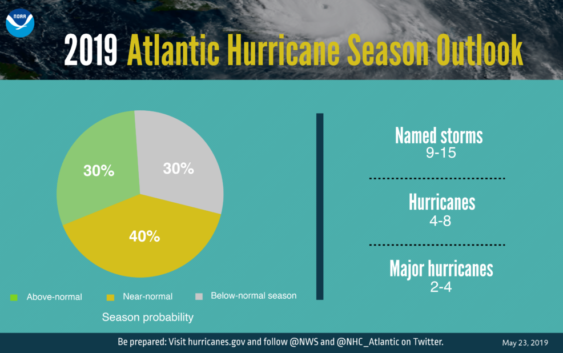- Seven months after Hurricane Helene, Chimney Rock rebuilds with resilience
- Wildfire in New Jersey Pine Barrens expected to grow before it’s contained, officials say
- Storm damage forces recovery efforts in Lancaster, Chester counties
- Evacuation orders lifted as fast-moving New Jersey wildfire burns
- Heartbreak for NC resident as wildfire reduces lifetime home to ashes
NOAA Predicts ‘Near-Normal’ 2019 Atlantic Hurricane Season

Just over a week from the start of the 2019 hurricane season, government forecasters say they expect about a dozen named storms, including two to four major hurricanes, to develop in the Atlantic.
For a storm to be named it must have winds of 39 mph or higher, while major hurricanes are those with winds higher than 111 mph.
National Oceanic and Atmospheric Administration forecasters believe El Niño activity — periodic warming in the Pacific Ocean — will limit the intensity of this year’s hurricane season. However, forecasters say warmer-than-average sea-surface temperatures in the tropical Atlantic Ocean and Caribbean Sea, combined with an “enhanced” west African monsoon season, favor increased hurricane activity.
NOAA forecasts a 40% chance the season stays within “normal” bounds — 12 named storms, of which six become hurricanes, including three major hurricanes — and equal chances (30%) the season is below or above normal.
The annual outlook does not make predictions on whether or where any storm may make landfall.
Hurricane season runs June 1 through November 30. NOAA plans to release a second seasonal outlook in August ahead of the season’s typical peak in activity.
Alongside the prediction, the agency announced it will be upgrading the Global Forecast System (GFS) for the first time in 40 years to make improvements to tropical cyclone track and intensity forecasts. That system will take in data from a fleet of three new satellites.
NOAA said this year its “Hurricane Hunter” aircraft will be able to collect higher-resolution data from upgraded radar systems in near-real time.